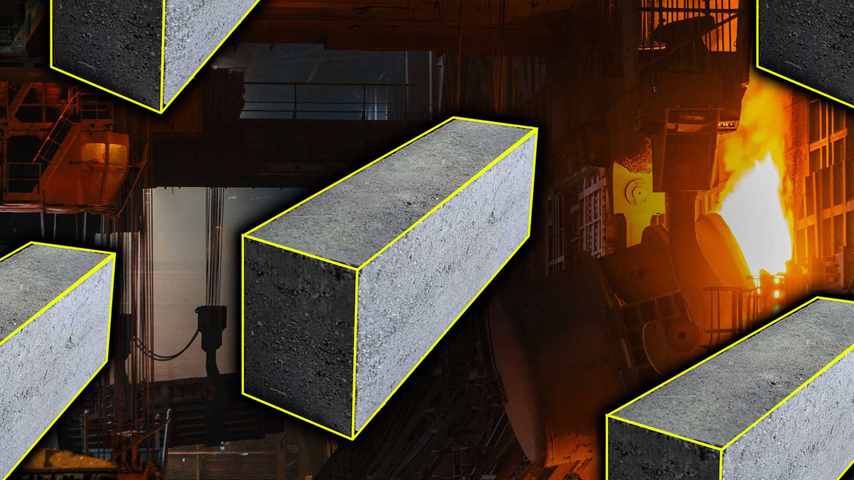NASCAR, Leidos Partner on Moon Buggy Prototype
NASCAR, Leidos Partner on Moon Buggy Prototype


NASA’s planned Artemis missions are inspiring innovation from private industry, even in the stock-car racing circuit.
Earlier this year, when NASA solicited proposals to design and build a lunar terrain vehicle for use on future Artemis missions, one team stood out for its combination of conventional aerospace expertise and sports-world showmanship.
In its bid for the Human Landing System Sustaining Lunar Development contract, Leidos, the defense, aviation, and IT company headquartered in Reston, Va., has partnered with stock-car racing giant NASCAR. The Leidos-NASCAR team unveiled its rover at the Space Foundation's 38th annual Space Symposium in April 2023.
The Leidos-NASCAR LTV is one of several proposed by private industry looking to work with NASA on the contract for a Lunar Terrain Vehicle (LTV) prototype, a critical component of NASA's efforts to establish a sustainable presence on the moon. The groups that advance will enter a year-long study phase and if successful, will launch a demonstration rover to the moon to prove it works as intended.
“It’s up to us to figure out how we get there, how we operate, and how we provide that service to NASA,” said Matt Doude, program manager for Leidos. “What you've seen in the media is a real functional prototype test vehicle that we built using our own investment.”
Have a Listen: Behind the Webb
As the technical lead on development of the team’s rover concept, Doude is also responsible for the performance and execution of the team’s program, if they’re one of the companies selected to advance.
“I will eat, breathe, and sleep putting a functional rover on the moon and having it work when it gets there,” Doude said.
A news release announcing the partnership’s prototype described the design as simple while “incorporating modern innovations that prioritize sustainability.”
“Ultimately, it's a car for the moon,” Doude said. “The moon just happens to have some really unique environmental requirements.” For one, the lack of an oxygen-rich atmosphere means internal combustion engines are out.
“The environmental constraints really drive you toward a different kind of design,” Doude said. Those constraints make the lunar rover similar to a modern battery-electric vehicle. The electric motor eliminates the need to bring resupply fuel on the mission, as the battery self-sufficiently recharges using solar energy.
“Where things really get challenging are when you consider the temperatures on the moon, which can get to -100 °C,” Doude said. “Finding materials that operate at those extremely cold temperatures is one of the really foremost challenges of building the rover.”
Become a Member: How to Join ASME
He pointed to the LTV’s tires as an example. No air and one-sixth the gravity of Earth certainly makes it difficult to change a tire. Partnering with NASA and other private companies, the team advanced an approach first used on the Apollo rover, which included tires made of metal. The Leidos-NASCAR LTV uses tires made from a shape memory alloy called Nitinol, a highly elastic metal alloy composed of nickel and titanium.
“It has material properties that are exceptional when compared to other metals,” Doude said. “The development and the use of these new tires is going to be absolutely critical to developing a moon rover that can work across the variety of the terrain, but also survive the temperatures on the moon.”
Unlike the Lunar Rovers of the Apollo missions, which needed an astronaut behind the wheel, the Artemis LTV is expected to operate autonomously, with the ability to collect material samples, conduct experiments, along with general exploration.
“We also have the capability during the downtime when NASA is not using the rover, to go in and sell the same services to private companies,” Doude said.
His team evaluated a variety of data in search of ways to improve the rover. “Our goal with our vehicles is to break things [to see] how we can make it stronger and make it more effective,” he said.
More for You: 5 Most Powerful Space Launch Systems
While NASCAR is not directly working on the design and build of the physical rover, it is providing advice in very specific areas of expertise, such as safety, durability, and repair, according to an email from Matt Nordby, managing director of communications for NASCAR. It will also do some heavy lifting when it comes to promotion.
This isn’t the first partnership between Leidos and NASCAR. Leidos has had a standing relationship with one of NASCAR’s race teams, 23XI, and its driver Bubba Wallace, according to Nordby.
“When the opportunity came about for Leidos to design and build this LTV, we began mutual discussions on how we might be able to help them optimize the initiative,” Nordby wrote. He added there are several parallels between the sport of NASCAR and what Leidos is doing with advancing space travel: speed, safety, reliability, and pushing the envelope of what’s possible with a vehicle.
NASA is expected to announce its shortlist of companies that will advance to the study phase by the end of the year. NASA intends to use the LTV for crewed operations beginning with Artemis V as early as 2029.
Nancy Kristof is a technology writer in Denver, Colo.




